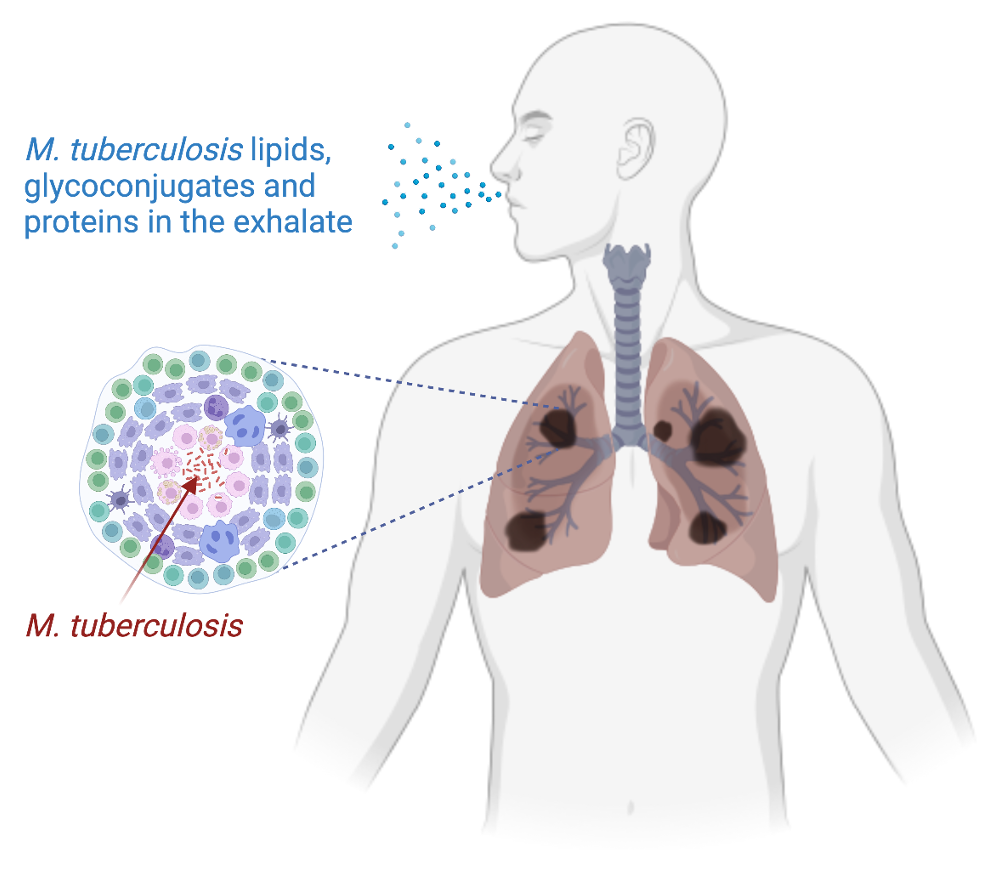The World Health Organization (WHO) estimates that there are 10 million new cases of tuberculosis per year, 12% of which are children. However, 1/3 of these cases remain undiagnosed, mainly because of limitations of the tools currently available. The scientists’ work shows that the air exhaled by tuberculosis patients contains traces of the presence of the bacteria responsible for tuberculosis and that its analysis would allow a much more sensitive, rapid and easy diagnosis of the disease. The study was published on December 14, 2022 in the journal Nature Communications.
WHO’s goal is to reduce TB mortality and incidence by 90% and 80% respectively by 2030 compared to 2015 levels. This cannot be achieved without the development of much more effective diagnostic tools. TB diagnosis is currently based on clinical and radiographic examinations, coupled with bacteriological analysis of sputum where the presence of Mycobacterium tuberculosis, the bacterium responsible for the disease, is searched for by microscopic analysis, culture and/or gene amplification. However, sputum analysis has a low sensitivity in children and in individuals with low sputum counts, such as HIV co-infected patients

Tuberculosis patients exhale large quantities of Mycobacterium tuberculosis molecules, including lipids, glycoconjugates and proteins, that can be assayed for disease detection. (Created with BioRender.com) © Jérome Nigou, Olivier Neyrolles
In this study, scientists evaluated the diagnostic potential of a poorly explored biological sample, the exhaled breath condensate. This sample, which corresponds to the liquid phase of exhaled air sampled by cooling, has many advantages in the context of TB diagnosis. Indeed, it is constituted by the aerosolization of the liquid covering the respiratory epithelium; its composition thus varies according to the pathological state of the lung. Moreover, its collection is easy, non-invasive, and does not require specialized personnel. Here, scientists have been able to detect in the exhaled breath condensate collected from TB patients the presence of molecules (glycoconjuugates, lipids and proteins) produced by M. tuberculosis, allowing to differentiate these patients from healthy individuals or those with other respiratory infections. Interestingly, this approach, which can be implemented in the short term directly at point-of-care, allows the detection of TB patients for whom the bacteriological analysis of sputum is negative.
The results of this pilot study have already attracted the attention of several national and international organizations and are being validated on larger cohorts of patients in different regions of the world.
Source
“A Mycobacterium tuberculosis fingerprint in human breath allows tuberculosis detection”
Sergio Fabián Mosquera-Restrepo, Sophie Zuberogoïtia, Lucie Gouxette, Emilie Layre, Martine Gilleron, Alexandre Stella, David Rengel, Odile Burlet-Schiltz, Ana Cecilia Caro, Luis F. Garcia, César Segura, Carlos Alberto Peláez Jaramillo, Mauricio Rojas*, Jérôme Nigou* Nature Communications December 14, 2022 – Access the article
Researcher contact
Jérôme Nigou | Jerome.Nigou@ipbs.fr | +33 (0)5 61 17 55 54 | @NigouJ
Press contact
Francoise Viala | communication@ipbs.fr | +33 (0)6 01 26 52 59

